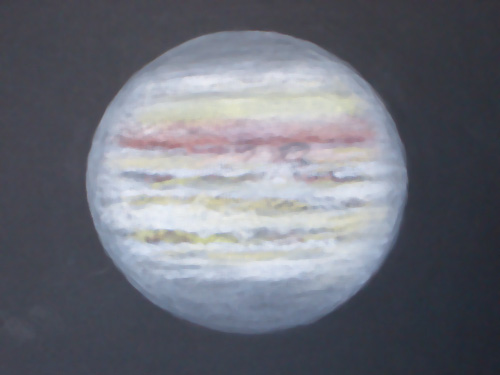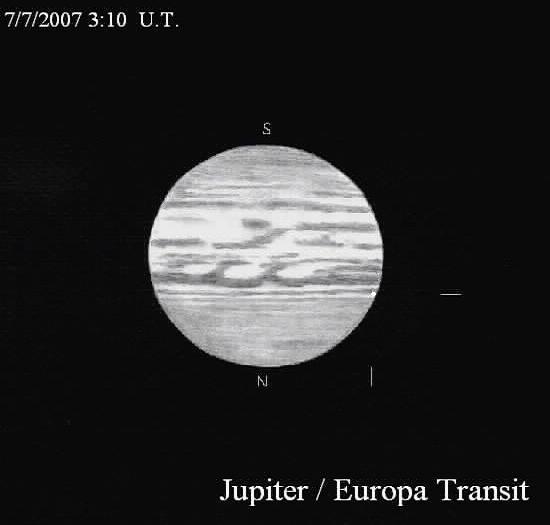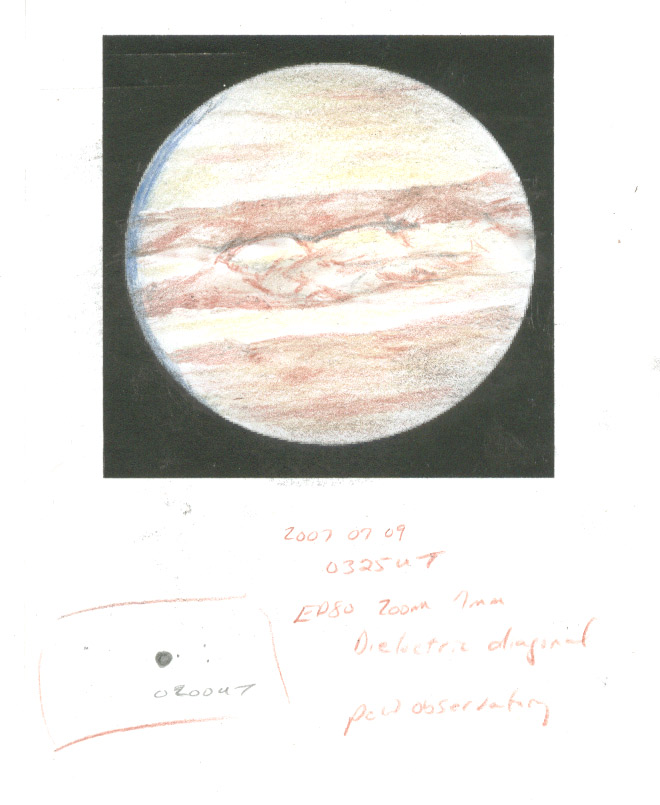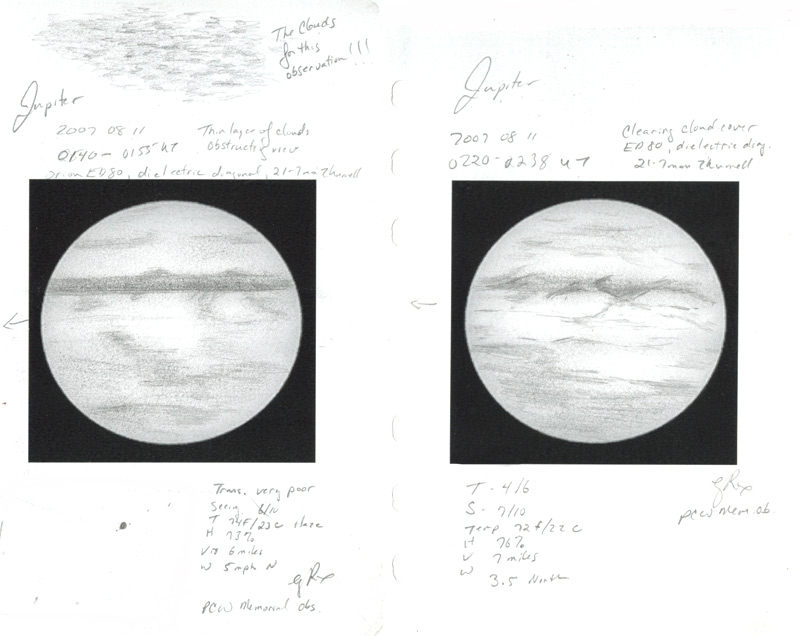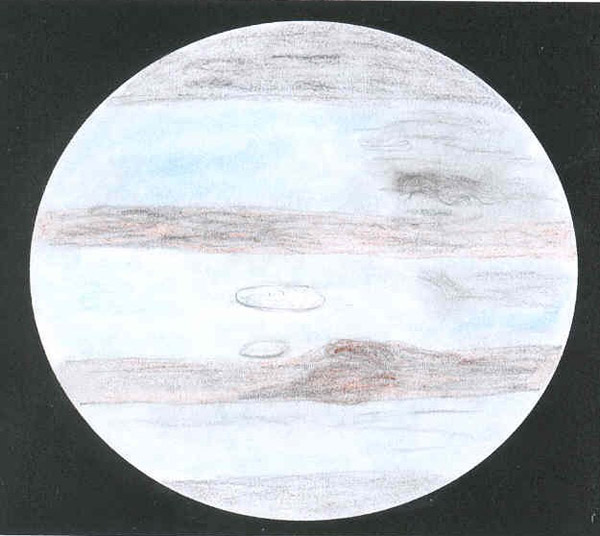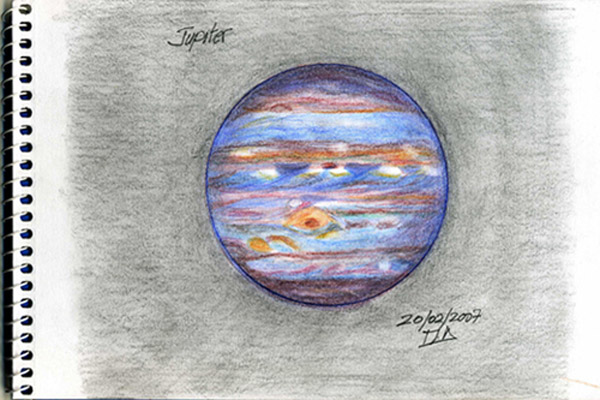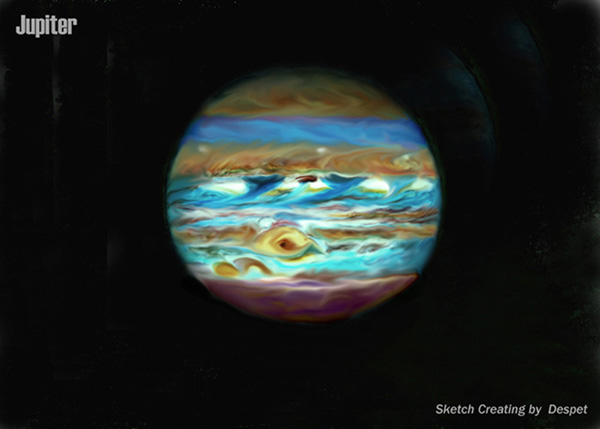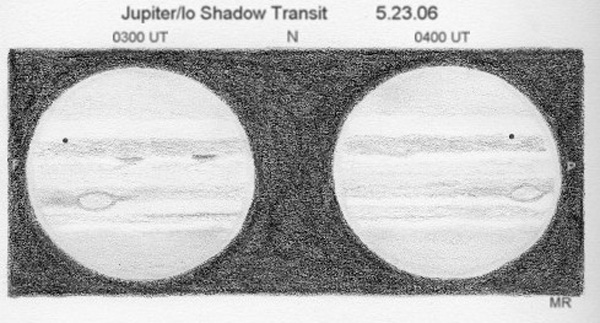Jupiter-July 11th, 2007
By Richard Handy
The fog along the San Diego coast finally relented enough for a observation and sketch of Jupiter last evening. The Atmosphere was steady enough at Antoniadi II by the time I started around 6:00 UT. I was so happy to get a chance to sketch at the eyepiece after such a long spell of foggy evenings. Jupiter’s elevation above my southern horizon made use of my binoviewers with a 45 degree erector diagonal so comfy! The creamy off-white colors separating the major bands caught my attention first, as they should I guess, since they seem to dominate in total area the visible face of Jupiter. Guess that’s why Jupiter appears like a bright yellow star to our naked eyes. The rusty hue of the NEB was fun to try to capture. I noted burnt sienna barges on some areas along it’s southern fringes. At places the bands appeared broken. The grayish caps at times looked to have little filigrees running along their margins, but the seeing just couldn’t hold long enough to render them.
Sketch details:
Object: Jupiter
Time: 5:57 UT until 6:35 UT Date: 7-12-07
Seeing: Antoniadi II Weather: clear
Telescope: Meade 12 SCT, f/10
Binoviewer: W.O. Bino-P with 1.6X nosepiece
W.O. 45 degree Erector Diagonal
Eyepieces 18 mm W.O. Plossl
Magnificaton: 271X
Medium: Colored Conte’ pencils and colored chalks on 9″ x 12″ Strathmore Artagain black paper
Sketch size: 9″ x12″ Jupiter’s disk is about 5″ in diameter

